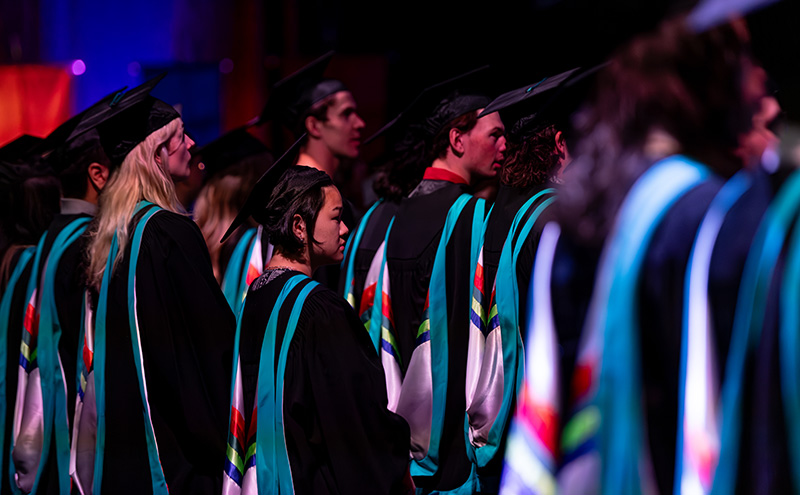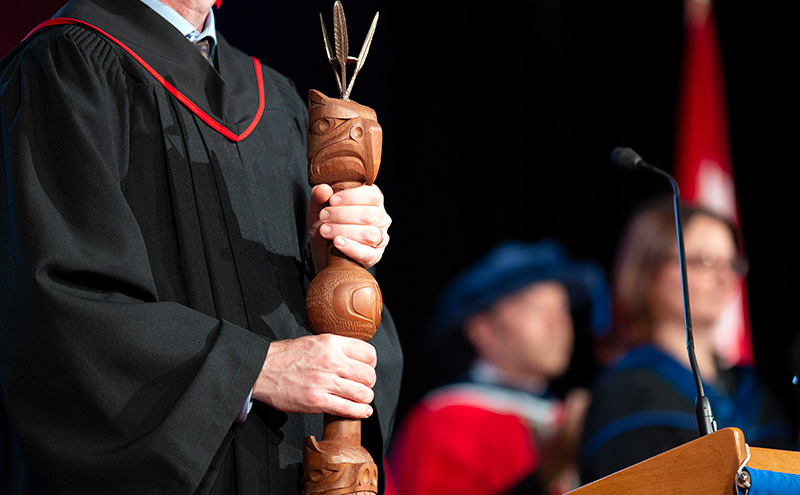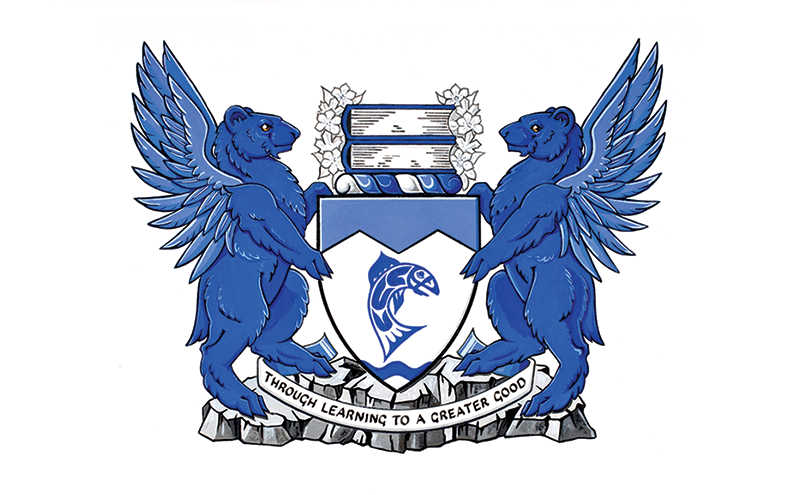3 Surprising Stories Behind CapU’s Convocation Traditions
Published5 June, 2024
Photo credit Barry Calhoun and Taehoon Kim
Congratulations! You made it. The days of late-night studying, rushing deadlines, and stressful exams are finally behind you.

CapU’s Convocation Day is dedicated to you. Today, we celebrate your achievements.
Convocation Day is a day graduates remember for a lifetime. The day is filled with unique traditions that serve as a reminder of each of our graduates’ journeys, but do you know the fascinating history behind CapU’s convocation traditions? Read on to learn all about it.
“CapU proudly upholds its rich convocation traditions, deeply rooted in regional history and culture. From the carved mace that starts the ceremony to employees applauding the graduand procession, these elements are just some that create meaningful celebration of our students’ academic achievements.”
Why do we wear a cap and gown?
In medieval times, university studies were often held in cold, unheated churches and the robes were worn for warmth. Monks would even shave their heads in the traditional tonsure as a sign of humility, and they wore hoods to stay warm.
Luckily for you, our convocation ceremonies take place in the summer.
You would see hoods and robes of different colours and styles, each indicating a specific level and area of study. The hoods feature CapU’s five faculty colours on the satin lining, complemented by Capilano University’s primary brand colour, cyan blue, in the trim. These hoods are worn by all bachelor’s degree graduates.

The mace
The ceremonial mace symbolizes the authority to grant degrees and embodies the history, tradition and vision of Capilano University.
Crafted from yew wood by Sḵwx̱wú7mesh (Squamish) Nation artist Xwalacktun (Rick) Harry, its design reflects the unique territorial qualities of the region, from Deep Cove to Mt. Currie to Earl’s Cove on the Sunshine Coast.
It incorporates elements of the animal world, landscape and directional symbolism.

The symbolism of the CapU heraldry
The shield features a salmon in the style of West Coast First Nations art, symbolizing the university’s close ties with local Indigenous communities since its establishment in 1968. Waves at the base represent the Pacific Ocean nearby, while the top signifies the Coast Mountains.
Books symbolize education, arranged in a nod to the former Capilano College emblem. Maple leaves and dogwood flowers signify the university’s British Columbia location.
Bears, representing strength and connection to the supernatural, and wings, symbolizing aspiration, draw from local and medieval symbolism. Finally, the rugged base signifies the nearby Coast Mountains, a prominent local landmark.

Through learning to a greater good
Now that you’ve delved into the rich stories behind the traditions of CapU convocation, it’s time to revel in this special day dedicated to you.
We’re grateful to have had you with us at CapU and we can’t wait to see the mark you’ll make in the world.



